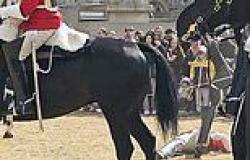By Yuan Ren For Mailonline
Published: 18:00 BST, 17 April 2019 | Updated: 19:15 BST, 17 April 2019
5 shares
View
comments
Lightning does indeed strike the same place twice, according to new scientific research.
Dutch experts used a new radio telescope called the Low Frequency Array (LOFAR) to examine lightening strikes in more detail than ever before.
The telescope helped them to identify 'needle' structures inside the channels through which electrical charges flow during a lightening strike.
Remaining electrical charges that are not released during the first lightening strike are stored in these needles and can trigger a second strike, they found.
Scroll down for video

Lightning does indeed strike the same place twice, according to new scientific research. Dutch experts used a new radio telescope called the Low Frequency Array (artist's impression) to examine lightening strikes in more detail than ever before
Researchers from the Groningen University in The Netherlands used LOFAR, which is made up of thousands of antennas spread across northern Europe, to make the finding.
LOFAR'S antennas are connected with a central computer through fibre-optic cables, which means they can operate as a single entity.
The telescope is developed primarily for radio astronomy observations. But the frequency range also makes it suitable for lightning research. Discharges produce bursts in the VHF (very high frequency) radio band.
Professor Olaf Scholten, a physicist at the university, said: 'The reason why the needles have never been seen before lies in the "supreme capabilities" of LOFAR.
'This finding is in sharp contrast to the present picture, in which the charge flows along plasma channels directly from one part of the cloud to another, or to the ground.'
Lightning occurs when strong upward drafts in the air generate static electricity in large and dense rainstorm clouds.
Parts of the cloud become positively charged and others negatively charged.
When this charge separation is large







